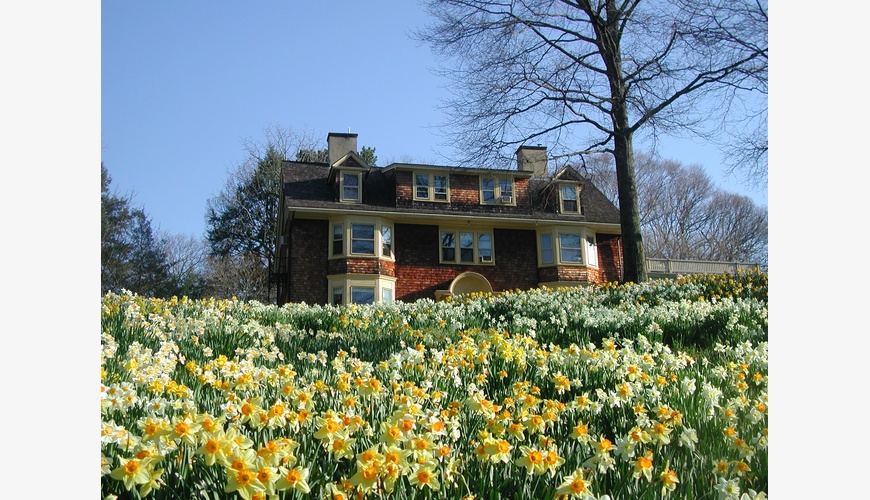




- Grounds open year-round: April-October, 7am to 7pm; November-March, 9am to 4pm
- Historic Wisner House open during seasonal art exhibits: Tuesday-Sunday, 10am to 4pm
- Arboretum History Exhibit and Greenhouse open most days from 10am to 4pm
- Call before visiting to confirm dates and hours
- Major events include the Maple Sugaring Fest (Feb/March), Daffodil Day (April), Celebrate Fall (October) and Festival of Trees (December)
- Environmental, nature and gardening programs take place throughout the year for children and adults
- Garden tours hosted from April to October, summer camps and concerts from June to August, seasonal art exhibits, and a history exhibit and greenhouse from February to October
- Picnic area
- Parking
- Bike racks
- Restrooms
- Some areas ADA accessible
- No pets allowed
- Free
- $5 suggested donation
Reeves-Reed Arboretum
165 Hobart Avenue, Summit, NJ 07901
908-273-8787
Once a country estate, Reeves-Reed Arboretum is now a 13.5-acre public garden listed on the National and State Registers of Historic Places. The estate and gardens represent design trends by prominent late nineteenth and early twentieth century landscape architects, including Calvert Vaux, a partner of Frederick Law Olmsted; Ellen Biddle Shipman, one of the first and most successful female landscape designers in the country at the time; and Carl F. Pilat, an organizer of the firm Hinchman & Pilat.
During the Revolutionary War, the property was adjacent to the Old Sow Revolutionary War Cannon and the Signal Beacon atop Beacon Hill. General George Washington ordered a series of signal beacons to be built on "conspicuous hills and mountains" east of the Watchung Mountains to guard against surprise attacks out of New York. There were twenty-three beacons in all, with this one being number 10.
Reeves-Reed Arboretum was founded in 1974 with the aid of local citizens, who raised most of the cost to preserve the estate as an arboretum. Today, the historic estate welcomes over 100,000 visitors annually to enjoy the grounds, gardens, trails, tours, environmental education programs, special events, art and history exhibits, concerts, and volunteer programs.
WHAT TO SEE AND DO
- Tour the lush gardens and grounds
- Attend an environmental education program
- Attend a special event, art or history exhibit, or concert on site
- Learn about the site’s history as a “signal beacon” during the Revolutionary War
Journey through Jersey strives to have the most up-to-date information, but always check with the site itself before planning a visit.














